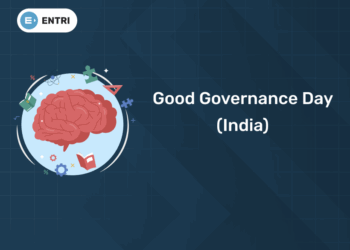Table of Contents
Key Takeaways:
- Preparation and practice are key to confidence and clarity in group discussions.
- Structure your thoughts and contributions logically using proven frameworks and examples.
- Build leadership through active listening, respectful communication, and concise summaries.
- Effective body language and empathy create a positive impression on both peers and assessors.
- Upskill with Entri’s Career Level-Up Course for expert-led group discussion and interview mastery.
Introduction
Imagine being called for a group discussion out of the blue—your palms sweat, and you wonder, “Will I sound smart enough? What if I know nothing about the topic?” From campus placements to MBA interviews and professional meetings, group discussions (GD) are high-pressure, revealing settings. But here’s the truth: most people feel daunted, no matter their experience level. The relief is, you don’t need to be an expert on every topic—you need clear thinking, effective strategies, and the ability to engage respectfully with others.
This guide helps you find your voice, structure your arguments, and turn nerves into strength—even when the GD topic feels like an alien world. Let’s break it all down so you can walk in prepared, confident, and ready to shine.
What is a Group Discussion?
A group discussion (GD) is a structured conversation, often used by employers and universities to evaluate candidates’ communication skills, team spirit, leadership ability, and critical reasoning. Participants discuss a given topic for a set time, aiming to communicate clearly, collaborate, and present unique viewpoints that contribute meaningfully to the group.
Read more at What is Group Discussion? – Definition, Types, Topics
Boost Your Skills & Kickstart Your Career!
Employability and Personality Development Course by Entri App: Enhance your communication, confidence, and job-ready skills to excel in your career.
Join Now!Types of Group Discussion Topics
- Fact-based: Requires data and analysis. Example: “Should remote work be the new normal?”
- Case study: Solves a scenario/problem with logic and teamwork.
- Opinion-based: Subjective prompts—values or beliefs. Example: “Is competition good for education?”
- Abstract: Creative interpretation. Example: “Blue is the new Black.”
Step-by-Step Guide: Cracking the Group Discussion
Here’s a stepwise plan you can use and adapt for any GD, no matter how unfamiliar the topic feels.
Step 1: Prepare Before the GD
- Practice regularly: Simulate group discussions with friends or mentors—this builds real confidence and improves spontaneity.
- Stay updated: Read news, editorials, and trending GD topics (think “AI in daily life,” “Mental health in schools,” etc.).
- Strengthen speaking and reasoning through debates, mock interviews, or public speaking opportunities.
Step 2: Decode the GD Topic Quickly
- Take 30 seconds to mentally classify the topic—is it social, economic, technical, or philosophical?
- Frame your central idea for the discussion and clarity about which angle you can add.
Step 3: Craft a Strong Opening
- Pick an appropriate starter:
- Definition: Useful for abstract themes.
- Shocking fact/data: For issues with statistics or impact.
- Quote: Makes you sound knowledgeable.
- Question: Sparks curiosity among group members.
- Keep your intro short (3–5 sentences), clear, and neutral unless making a strong case.
- End by inviting others to add their views. Example: “I think there are several layers to this topic, and it’ll be exciting to hear everyone’s perspective.”
Step 4: Structure Your Points Logically
- Use frameworks like PEEL (Point–Evidence–Explanation–Link), Past–Present–Future, or Cause–Effect–Solution.
- Organize thoughts before speaking; use numbered/bullet points for clarity.
Example:
- Point: Social media impacts mental health.
- Evidence: “A 2025 survey showed 65% of teens felt increased anxiety due to Instagram.”
- Explanation: Online peer pressure and unrealistic comparisons worsen mood.
- Link: “So, regulation and digital awareness are crucial.”
Step 5: Participate Actively and Listen Intently
- Respond to others politely: “Adding to your point…”, “I appreciate your perspective, and…”
- Avoid interrupting—let speakers finish, then add your views.
- Use concise language; avoid rambling or repetition.
Step 6: Support Your Arguments with Examples and Data
- Facts and statistics make your point credible.
- Share lived experiences or real-case scenarios if possible.
Step 7: Demonstrate Leadership and Teamwork
- Take initiative if the group stalls, but encourage shy members: “Does anyone who hasn’t spoken want to share?”
- Summarize key points occasionally: “So far, we agree on X and Y but need clarity on Z.”
Step 8: Mind Your Body Language and Presentation
- Sit up straight, maintain eye contact with all group members, and use natural hand gestures.
- Nod and acknowledge good points.
- Dress professionally—first impressions matter.
Step 9: Manage Time Effectively
- Pace your responses; don’t rush or dominate.
- Be concise so others get to speak.
- Help wrap up the discussion at the end with a balanced summary.
Step 10: Handle Tough Situations Calmly
- If you don’t know the topic, listen first, then build on others’ points.
- If interrupted, assert politely: “May I finish my thought and then hear your view?”
- Avoid personal attacks or emotional reactions—keep it on-topic.
Step 11: Conclude and Summarize
- Recap main ideas and solutions discussed.
- Leave with a respectful closing line. Example: “It was great to explore different angles; I think consensus leans toward a balanced approach.”
Also read: How to Communicate Effectively in English in Group Discussions
Tips and Useful Phrases for Group Discussion Success
For Starters:
- “Let’s define the topic for clarity.”
- “Does anyone want to share a real-world example?”
For Active Participation:
- “Building on what you said…”
- “I’d like to respectfully disagree because…”
- “Could someone elaborate more on that?”
For Summarizing/Closing:
- “To summarize, we have explored both sides…”
- “It seems the group agrees that…”
Boost Your Skills & Kickstart Your Career!
Employability and Personality Development Course by Entri App: Enhance your communication, confidence, and job-ready skills to excel in your career.
Join Now!How to Introduce Yourself in a Group Discussion
- Keep it brief (20–30 seconds): State name, background, and one link to the topic.
- Example: “Good morning everyone, I’m Anjali. I study psychology and I am interested in today’s topic of social media influence.”
- Smile, speak clearly, and show genuine interest.
- Align your introduction with the topic if possible to add relevance.
Essential Skills Needed for GDs
- Active listening
- Structured thinking
- Assertive yet polite communication
- Quick analysis and adaptability
- Leadership and teamwork
- Professional presentation
Dos and Don’ts of Group Discussions
Dos:
- Respect others’ opinions
- Stay calm and positive
- Express points with confidence
- Support disagreements with reasons, not emotions
- Encourage quieter members to share
Don’ts:
- Dominate or interrupt the group
- Use disrespectful language
- Go off-topic or lose focus
- Personal attacks or aggressive tone
Common Mistakes to Avoid
- Speaking too much or too little
- Ignoring group dynamics—focus only on your own perspective
- Lack of structure—rambling or repeating points
- Fidgeting or poor body language
- Not supporting views with examples or data
Also read: Communication Skills for Success in Workplace
Group Discussion Frameworks to Structure Thoughts
Having a clear framework is the secret weapon for organizing your ideas and communicating persuasively during a group discussion. Good frameworks aren’t just for writing—they instantly sharpen the clarity of your spoken points. Whether you need to brainstorm under pressure or summarize ideas logically, these structured approaches are your best friend.
1. The PEEL Method
PEEL stands for: Point, Evidence/Example, Explanation, Link.
- Point: Clearly state your main argument or perspective. Make it relevant, concise, and directly connected to the GD topic.
- Evidence/Example: Provide strong support using real data, facts, statistics, anecdotes, or relatable examples. This builds credibility and backs up your claim.
- Explanation: Unpack how your evidence proves your point. Clarify why the evidence is significant and how it connects to the GD topic.
- Link: Summarize your point and tie it back to the group’s discussion or transition to the next idea.
Example Use in GD:
- Point: “Investing in public transportation is vital for reducing urban congestion.”
- Evidence/Example: “For instance, after Seoul expanded its subway, traffic dropped 30% between 2004 and 2020.”
- Explanation: “This shows that robust public transport can shift commuting habits and ease road pressure.”
- Link: “So, focusing on such infrastructure tackles congestion and aligns with sustainability goals.”
GD Tip: You can verbally follow PEEL every time you contribute—it keeps your responses focused, logical, and persuasive. Practice framing everyday opinions or news headlines in this way.
2. Cause–Effect–Solution
Break any issue down methodically:
- Cause: Define what led to the problem or situation.
- Effect: Describe the impact or consequences.
- Solution: Suggest practical ways forward that address the causes and effects.
Example Use in GD:
- “Rising air pollution (cause) has led to increasing health issues (effect), so we need stricter emission controls and public health campaigns (solution).”
GD Tip: This method helps you sound analytical and solution-oriented—great for topics on social issues, business, or policy.
3. Past–Present–Future
Use this timeline for broad or abstract topics:
- Past: Briefly introduce history or background to set the context.
- Present: Discuss the current status or challenges.
- Future: Forecast implications or suggest actions for improvement.
Example Use in GD:
- “Remote work emerged slowly (past), but the pandemic made it widespread (present). In the future, flexible work models may become standard across industries.”
GD Tip: This framework works well when asked to analyze a trend or propose recommendations.
4. Solution–Benefit–Limitation
For decision-making and analytical topics:
- Solution: Propose a key method or policy.
- Benefit: Explain positive outcomes.
- Limitation: Briefly highlight challenges or risks.
Example Use in GD:
- “Shifting to renewable energy is essential (solution), providing cleaner air and new jobs (benefit), though initial investment remains a challenge (limitation).”
GD Tip: Acknowledging both positives and negatives shows balanced thinking.
Practical Steps to Use Frameworks in GD
- Listen and jot down the topic. Quickly decide which framework fits best.
- Use the framework to mentally map your points, before speaking.
- For each contribution, signal your structure: “Let’s look at the cause, effect, and solution here…”
- Summarize using the framework at the end or help transition the discussion logically.
Pro-tip: Practice structuring your answers for current events and common GD topics using these models—this habit makes real GDs much easier and boosts your confidence.
Frameworks like PEEL and Cause–Effect–Solution don’t just make your thoughts clear; they help evaluators see that you’re organized, analytical, and ready for real-world challenges. That’s exactly what top recruiters and universities are seeking.
People also read: An Introduction to Communication: Types and Barriers
Step-by-Step Mock Group Discussion: Sample Flow
- Arrival: Greet everyone and settle comfortably.
- Topic Announcement: Listen carefully as the moderator presents the topic.
- Thinking Time: Use initial 30–60 seconds to brainstorm angles and jot ideas.
- Opening: Volunteer a strong, clear opening (definition, quote, stat).
- Main Discussion: Contribute logically, reference others’ ideas, build upon or respectfully challenge as needed.
- Active Listening: Nod, reference points, invite quieter members, maintain eye contact.
- Support Points With Examples: Cite facts and real stories.
- Handle Interruptions/Disagreements: Stay polite and assertive.
- Summarize: Recap main points as discussion wraps up.
- Conclusion: Offer a balanced, solution-oriented closing statement.
Entri’s Career Level-Up Course: Your GD Success Partner
Ready to upskill? Entri’s Career Level-Up Course is built for modern job-seekers, students, and professionals aiming for GD and interview mastery. The program includes:
- Interactive, practice-based modules on communication, leadership, and group discussion skills.
- Mock GDs, resume tweaks, and confidence-building workshops led by industry experts.
- Soft skills, business English, and grooming tips for strong first impressions.
- Personalized feedback for fast improvement and success in placement rounds.
Whether starting your career or seeking a step up, Entri’s flexible online model empowers you with exactly the skills top recruiters seek. Try a demo or enroll today!
Conclusion
Group discussions reveal far more than book knowledge—they showcase confidence, clarity, empathy, and teamwork. Use these step-by-step tips, frameworks, and skills to stand out in any GD scenario. Remember, improvement comes with honest practice and feedback; Entri’s Career Level-Up Course can transform your readiness for interviews, placements, and panel rounds.
Take your next step. Practice, learn, and let every group discussion be a launchpad for your career aspirations.
Boost Your Skills & Kickstart Your Career!
Employability and Personality Development Course by Entri App: Enhance your communication, confidence, and job-ready skills to excel in your career.
Join Now!Frequently Asked Questions
What if I don’t know the GD topic at all?
Listen closely, make notes, and anchor your response to others’ ideas or ask good clarifying questions. Focus on structuring what you do know and stay calm.
How do I avoid dominating the discussion?
Speak 3–4 times, be concise, and always invite or reference input from other participants before moving forward.
What’s the ideal length for a GD introduction?
20–30 seconds. Include your name, background, and one relevant link to the topic.
What body language should I use?
Sit up straight, use natural hand gestures, make eye contact, and nod when others make good points. Avoid fidgeting.
Will Entri’s course help with live practice and feedback?
Yes! The Career Level-Up Course offers real-time GD practice, feedback, and tips for communication and interview success.

















